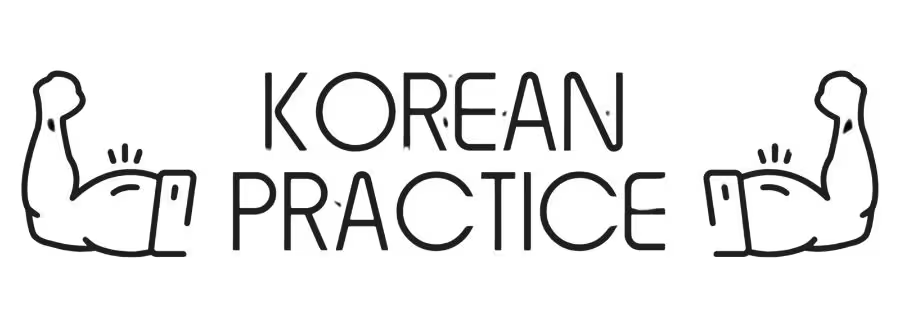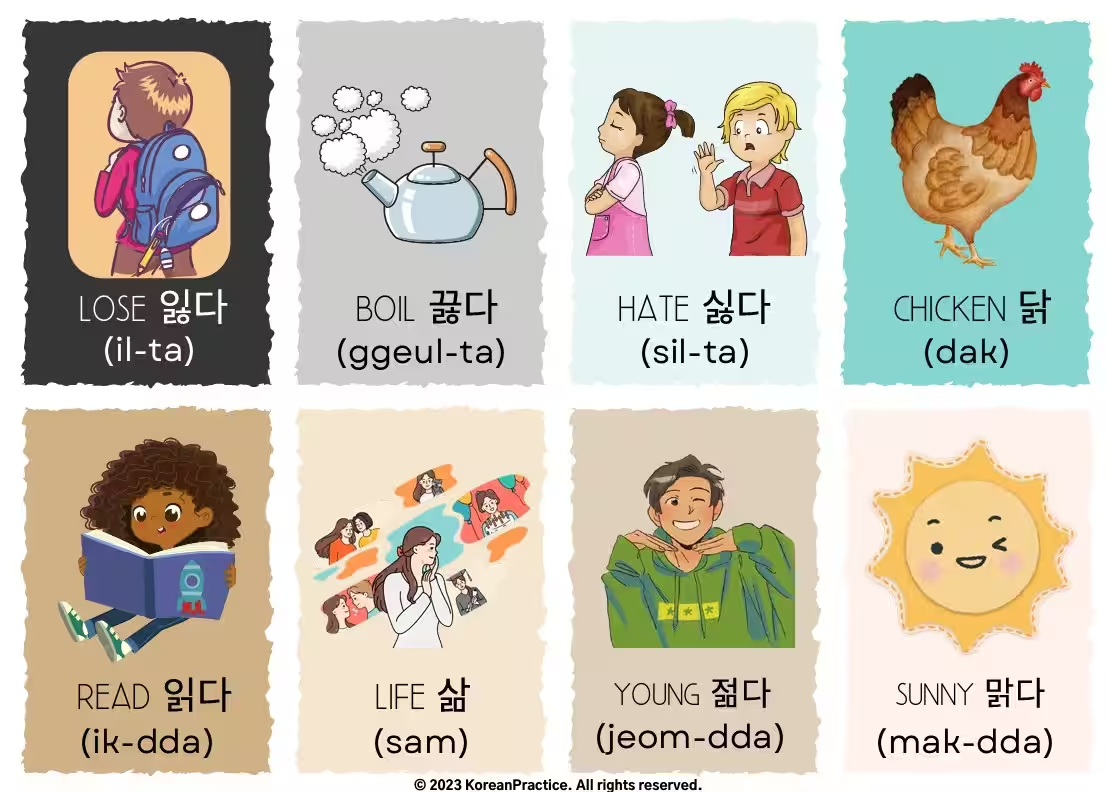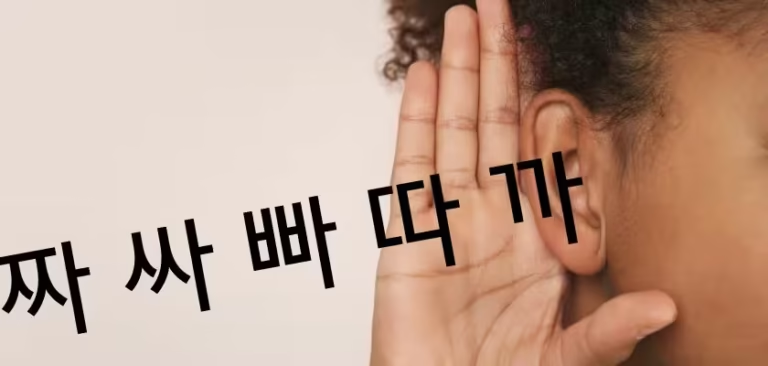Table of Contents
Introduction
Learning how to say where in Korean is essential for anyone starting Korean language. Whether you want to ask where someone is, find directions, or talk about locations, mastering these expressions will help you communicate effectively in daily situations. This complete guide covers everything from basic “where” questions to advanced location expressions that Korean speakers use every day.
Basic Word for Where in Korean
The fundamental word for where in Korean is 어디 (eodi). This versatile word serves as the foundation for all location-related questions and expressions. Unlike English, Korean uses particles with 어디 to show different relationships and meanings, making it more flexible than the simple English “where.”
Example Sentences:
Original Korean Sentence
어디에 있어요?
Pronunciation Guide
어디에 (eo-di-e) 있어요 (it-sseo-yo)?
Meaning and Context
어디 (where) 에 (at, in) 있 (to be) 어요 (polite ending; I’m asking you polite and friendly)?
English Translation
Where is it?
Literal Translation
At where is (it)?
Understanding 어디 is your first step toward mastering Korean location vocabulary. You’ll use this word countless times in conversations, so getting comfortable with its pronunciation and basic usage is crucial for effective communication.
Where Are You in Korean Informal
When speaking with friends, family members of similar age, or people you’re close with, you can use informal expressions to ask where someone is. The most common informal way to ask “where are you” is 어디야? (eodiya?) or 어디에 있어? (eodie isseo?).
Example Sentences:
Original Korean Sentence
지금 어디야?
Pronunciation Guide
지금 (ji-geum) 어디야 (eo-di-ya)?
Meaning and Context
지금 (now) 어디 (where) 야 (are; I’m asking you casually)?
English Translation
Where are you now?
Literal Translation
Where are (you) now?
These casual expressions are perfect for text messages, phone calls with friends, or relaxed conversations. Young Koreans use these phrases constantly when coordinating meetups, checking on friends’ locations, or simply making small talk about daily activities.
Where Are You in Korean Formal
In formal situations, such as speaking with teachers, elderly people, supervisors, or strangers, you must use polite language to show proper respect. The formal way to ask “where are you” is 어디에 계세요? (eodie gyeseyo?) or 어디에 있으세요? (eodie isseuseyo?).
Example Sentences:
Original Korean Sentence
선생님은 어디에 계세요?
Pronunciation Guide
선생님은 (seon-saeng-ni-meun) 어디에 (eo-di-e) 계세요 (gye-se-yo)?
Meaning and Context
선생님 (teacher) 은 (topic marker; marks the teacher as the main subject of the sentence, often providing new information) 어디 (where) 에 (at, in) 계시 (to be; honorific form of 있다. Used to show respect to the subject, in this case, the teacher) 어요 (I’m telling you (the listener) polite and friendly)?
English Translation
Where is the teacher?
Literal Translation
At where is teacher?
Using appropriate formal language demonstrates cultural awareness and respect for Korean social hierarchies.
Watch this Korean reading practice video to see Where in action
Where Is in Korean – Finding Places
One of the most practical applications of where in Korean is asking about the location of specific places. The pattern [place] + 이/가 + 어디에 있어요? is used to ask where something is located. This construction is essential for navigation and daily communication.
Example Sentences:
Original Korean Sentence
지하철역이 어디에 있어요?
Pronunciation Guide
지하철역이 (ji-ha-chel-yeo-gi) 어디에 (eo-di-e) 있어요 (it-sseo-yo)?
Meaning and Context
지하철 (subway) 역 (station) 이 (subject marker; the subject of the sentence is the subway station) 어디 (where) 에 (at, in) 있 (to be) 어요 (I’m asking you polite and friendly)?
English Translation
Where is the subway station?
Literal Translation
Where is subway station?
This pattern works with any noun, making it incredibly versatile. Whether you’re looking for a restaurant, bank, hospital, or any other location, this basic structure will help you get the information you need.

Where From – Asking About Origins
When you want to know where someone or something comes from, you use 어디서 (eodiseo) or 어디에서 (eodieseo). This form focuses on the origin or starting point rather than the current location.
Korean Examples:
- 어디서 왔어요? (Eodiseo wasseoyo?) – Where did you come from?
- 이 선물은 어디서 샀어요? (I seonmureun eodiseo sasseoyo?) – Where did you buy this gift?
Example Sentences:
Original Korean Sentence
이 선물은 어디서 샀어요?
Pronunciation Guide
이 (i) 선물은 (seon-mu-reun) 어디서 (eo-di-seo) 샀어요 (sat-sseo-yo)?
Meaning and Context
이 (this) 선물 (gift) 은 (topic marker; as for this gift,) 어디서 (at where; colloquial style of 어디에서) 샀 (bought) 어요 (I’m asking you polite and friendly)?
English Translation
Where did you buy this gift?
Literal Translation
As for this gift, at where bought?
This expression is particularly useful when meeting new people, as Koreans often ask about your hometown or country of origin. It’s also handy when asking about where to purchase items or where things originated.
Where To – Asking About Destinations
To ask where someone is going or where they plan to go, you use 어디로 (eodiro) or 어디에 (eodie). The particle 로 emphasizes direction and movement toward a destination.
Korean Examples:
- 어디로 가세요? (Eodiro gaseyo?) – Where are you going?
- 여행은 어디로 갈 예정이에요? (Yeohaengeun eodiro gal yejeongieyo?) – Where are you planning to travel?
Example Sentences:
Original Korean Sentence
여행은 어디로 갈 예정이에요?
Pronunciation Guide
여행은 (yeo-haeng-eun) 어디로 (eo-di-ri) 갈 (gal) 예정이에요 (ye-jeong-i-ye-yo)?
Meaning and Context
여행 (travel) 은 (topic marker; speaking of travel…) 어디 (where) 로 (toward) 갈 예정 (planing to go) 이에요 (I’m asking you polite and friendly)?
English Translation
Where are you planning to travel?
Literal Translation
Speaking of travel, to where are (you) planning to go?
This form is essential for discussing future plans, travel arrangements, and daily movements. It’s commonly used in casual conversations about weekend plans, vacation destinations, or immediate travel plans.
Where Exactly – Being More Specific
Sometimes you need precise location information rather than general directions. You can add words like 정확히 (jeonghwakhi) meaning “exactly” or 구체적으로 (guchejeogeuro) meaning “specifically” to make your questions more detailed.
Korean Examples:
- 정확히 어디에 있어요? (Jeonghwakhi eodie isseoyo?) – Where exactly is it?
- 구체적으로 어디에서 만날까요? (Guchejeogeuro eodiseo mannalkayo?) – Where specifically should we meet?
Example Sentences:
Original Korean Sentence
정확히 어디에 있어요?
Pronunciation Guide
정확히 (jeong-hwa-ki) 어디에 (eo-di-e) 있어요 (it-sseo-yo)?
Meaning and Context
정확히 (exactly) 어디 (where) 에 (at, in) 있 (to be) 어요 (I’m asking you polite and friendly)?
English Translation
Where exactly is it?
Literal Translation
At where exactly is (it)?
These enhanced expressions help you get precise information when basic “where” questions don’t provide enough detail. They’re particularly useful when arranging meetings or when you need to find exact locations in large buildings or complex areas.
Where About – Asking for General Location
When you don’t need exact addresses but want to know the general area, you can use expressions like 어느 지역 (eoneu jiyeok) meaning “which area” or 어디 근처 (eodi geuncheo) meaning “near where.”
Korean Examples:
- 어느 지역에 살아요? (Eoneu jiyeoge sarayo?) – Which area do you live in?
- 어디 근처에서 일해요? (Eodi geuncheoseo ilhaeyo?) – Near where do you work?
Example Sentences:
Original Korean Sentence
어디 근처에서 일해요?
Pronunciation Guide
어디 (eo-di) 근처에서 (geun-cheo-e-seo) 일해요 (il-hae-yo)?
Meaning and Context
어디 (where) 근처 (near) 에서 (at) 일해요 (work; I’m asking you polite and friendly)?
English Translation
Near where do you work?
Literal Translation
Near where (do you) work?
This type of questioning is perfect for casual conversations when you want to know someone’s general location without being too invasive or requiring specific details. It’s commonly used when getting to know new people or making general plans.
Where in Questions vs Statements
Understanding how to use “where” in both questions and declarative statements is important for natural Korean communication. Questions typically have rising intonation, while statements have falling intonation patterns.
Korean Examples:
- 학교가 어디예요? (Hakgyoga eodiyeyo?) – Where is the school? (question)
- 학교가 저기에 있어요 (Hakgyoga jeogie isseoyo) – The school is over there (statement)
Example Sentences:
Original Korean Sentence
학교가 저기에 있어요
Pronunciation Guide
학교가 (hak-gyo-ga) 저기에 (jeo-gi-e) 있어요 (it-sseo-yo).
Meaning and Context
학교 (school) 가 (subject marker; the school is the subject) 저기 (over there) 에 (at, in) 있 (to be ) 어요 ( I’m telling you polite and friendly).
English Translation
The school is over there.
Literal Translation
School is at over there.
This distinction helps you sound more natural and makes your meaning clearer to Korean speakers. Practice both question and statement forms to improve your conversational fluency and comprehension.
Saying “Nowhere” in Korean
Sometimes you need to express that you didn’t go anywhere or that something is nowhere to be found. In Korean, use 아무데도 안 (amudeodo an) or 어디도 안 (eodido an) to express “nowhere.”
Korean Examples:
- 어디도 안 갔어요 (Eodido an gasseoyo) – I didn’t go anywhere
- 아무데도 없어요 (Amudeodo eopseoyo) – It’s nowhere to be found
Example Sentences:
Original Korean Sentence
아무데도 없어요.
Pronunciation Guide
아무데도 (a-mu-de-do) 없어요 (eop-sseo-yo).
Meaning and Context
아무 (any) 데 (place) 도 (even) 없 (to not exist) 어요 (I’m telling you polite and friendly).
English Translation
It’s nowhere to be found.
Literal Translation
Even any place, (it) doesn’t exist.
These negative expressions are useful when responding to questions about your activities or when you can’t locate something. They’re commonly used in casual conversations about weekend activities or when searching for lost items.
Different Particles with “Where”
Korean particles change the meaning and function of 어디 in sentences. Understanding these particles is crucial for proper Korean grammar and natural expression.
Key particles include:
- 어디에 (eodie) – at where, in where (location)
- 어디로 (eodiro) – to where (direction)
- 어디서 (eodiseo) – from where, at where (origin/action location)
- 어디까지 (eodikkaji) – until where, how far
Korean Examples:
- 어디까지 갔어요? (Eodikkaji gasseoyo?) – How far did you go?
- 어디서 만날까요? (Eodiseo mannalkayo?) – Where should we meet?
Example Sentences:
Original Korean Sentence
어디까지 갔어요?
Pronunciation Guide
어디까지 (eo-di-gga-ji) 갔어요 (gat-sseo-yo)?
Meaning and Context
어디 (where) 까지 (until) 갔 (went) 어요 (I’m asking you polite and friendly)?
English Translation
How far did you go?
Literal Translation
Until where went?
Mastering these particles will significantly improve your Korean fluency and help you express location relationships more precisely and naturally.
From My Original Story Style Breakdown™ — A New Way to Truly Understand Korean
This is just one sentence from a complete learning system you won’t find anywhere else — designed to help you understand Korean naturally, without getting lost in grammar rules. You can choose between Quick Learning for a fast overview, or Deep Learning for a step-by-step breakdown.
When you can truly understand Korean sentences this way, speaking becomes much easier.
🚀 Quick Learning

Original Korean Sentence
코끼리는 아파요.
Pronunciation Guide
코끼리는 (ko-ggi-ri-neun) 아파요 (a-pa-yo).
English Translation
The elephant is in pain.
Literal Translation
Elephant is painful.
Quick Reference
코끼리는 (elephant) 아파요 (is painful).
💡 Need more details? See “Deep Learning” below!
🔍 Deep Learning
Meaning and Context
코끼리 (elephant)
→ Our elephant — now feeling the result of the lion’s action.
는 (topic marker)
→ Highlights the elephant as the topic of this sentence.
아프 (to be painful / hurt)
→ Describes how the elephant feels now.
아요 (polite ending; is)
→ I’m telling you polite and friendly.
Pronunciation Flow Tip
아프 + 아요 = 아파요: When rapidly pronounced, ‘프’ and ‘아’ naturally combine to form ‘파’, not 아프아요.
Real-Life Usage
아파요 can describe both physical pain and emotional hurt. You might hear it often if someone is unwell
Grammar
The ending 아요 doesn’t mean “is” on its own — it isn’t the same as is in English. But because it works together with the verb like a be verb (helping express a state in the present), I wrote it as is to make it easier to understand.
Pattern Practice
1. 아이가 아파요.
2. 할아버지가 아파요.
3. 마음이 아파요.
4. 다리가 아파요.
FAQs (What You Might Still Wonder About)
What’s the difference between “어디야” and “어디에 있어” when asking where someone is in Korean informal situations?
Both mean “where are you” in informal Korean, but “어디야?” is more casual and direct, like asking “where?” in English. “어디에 있어?” is slightly more complete, literally meaning “where do you exist?” It’s like the difference between “where?” and “where are you?” in English texting.
Can I use “where in Korean formal” expressions with anyone older than me?
Not necessarily! Age isn’t the only factor. Use formal “where” expressions (어디에 계세요?) with people you don’t know well, customers, teachers, or anyone in a professional setting. With older family members or close friends, you might use informal expressions depending on your relationship dynamic.
When asking “where is the restaurant in Korean,” should I use 식당 or 레스토랑?
Both work, but 식당 (sikdang) is more commonly used by Koreans and sounds more natural. 레스토랑 (reseutorang) is the borrowed English word “restaurant” and is often used for fancier dining establishments. For casual dining places, stick with 식당.
Why do Koreans sometimes say “어디 가?” instead of “어디로 가?” when asking where someone is going?
“어디 가?” is a shortened, very casual version that drops the particle 로. It’s commonly used in quick, informal conversations, especially among young people. Both are correct, but “어디로 가?” is more grammatically complete and appropriate for most situations.
Is there a polite way to ask “where in Korean” when I don’t want to sound too direct or nosy?
Yes! You can soften your question by adding “혹시” (hoksi – “by any chance”) at the beginning: “혹시 어디 가세요?” This makes it sound less direct. You can also ask “어디쯤 가시는 거예요?” (where about are you going?) to sound more casual and less intrusive.
What’s the most common mistake English speakers make when learning “where” expressions in Korean?
The biggest mistake is directly translating “where are you doing” from English, which doesn’t make sense in Korean. Instead of trying to translate word-for-word, learn that Koreans ask “뭐 해?” (what are you doing?) or “어디서 뭐 해?” (what are you doing and where?) to get similar information.
Final words
Mastering “where” expressions in Korean opens up countless opportunities for meaningful communication. From basic questions like “where are you” to complex directional expressions, these phrases form the foundation of location-based conversations in Korean.
The key to success lies in understanding not just the words themselves, but also the cultural context and appropriate usage levels. Whether you’re using informal expressions with friends or formal language in professional settings, choosing the right form of “where” demonstrates respect and cultural awareness.
Remember that Korean language learning is a journey, and making mistakes is part of the process. Start with basic expressions like 어디 (eodi) and gradually incorporate more complex forms as your confidence grows. With consistent practice and cultural sensitivity, you’ll soon be navigating Korean conversations about location with ease and confidence.
Keep practicing these “where” expressions in real conversations, and don’t hesitate to ask Korean speakers for help when you’re unsure about usage or pronunciation. Every interaction is an opportunity to improve your skills and deepen your understanding of this beautiful language.










